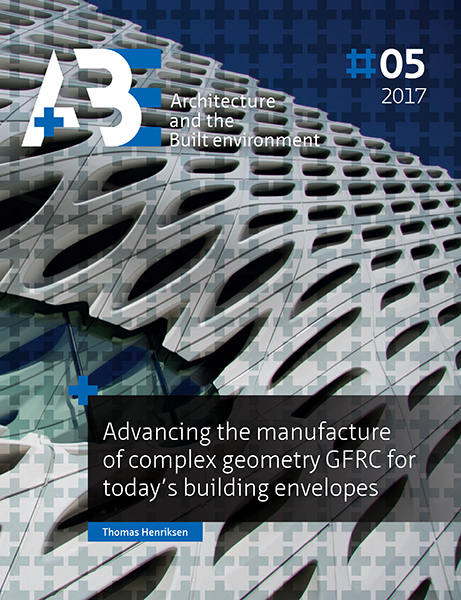Testing of solutions and proof of concept for the automated process
DOI:
https://doi.org/10.7480/abe.2017.5.3643Abstract
Developing and testing a novel manufacturing method for thin-walled complex geometry glass fibre reinforced concrete (GFRC) panels is required to advance towards a more digital automated process. The experimental procedure described identified the main bottleneck during the manufacture of complex geometry thin-walled GFRC panels, namely, the time taken to make the mould and cast the GFRC panels. The primary outcome was the development and application of a new mould capable of casting complex geometry thin-walled GFRC panels with good surface quality using a manufacturing method that enables more rapid automated large-scale production. This intermediate mould was tested successfully using the sprayed GFRC method and was the key element during the development of a novel cost effective manufacturing method for complex geometry thin-walled GFRC panels. This method was used to manufacture 9 different double curved intermediate moulds for a 10m high GFRC self-supporting, thin-walled hyperbolic shell, with 12mm thick panels at the base of the structure. The completed structure show-cased the effectiveness of the novel manufacturing method by reducing the production time from an estimated 100 days to 10 days if using a single reconfigurable mould surface, with computer controlled actuators capable of forming free-formed geometries.

